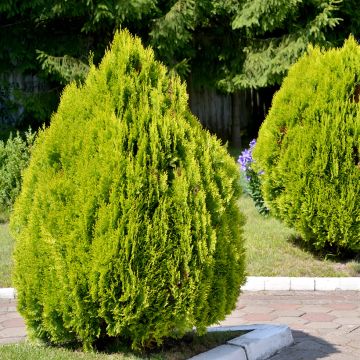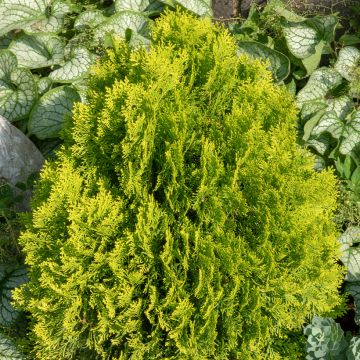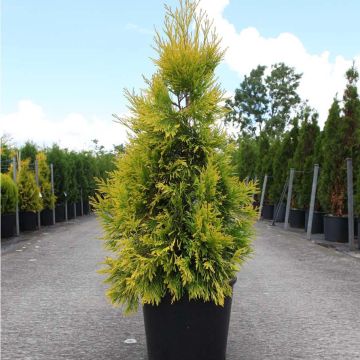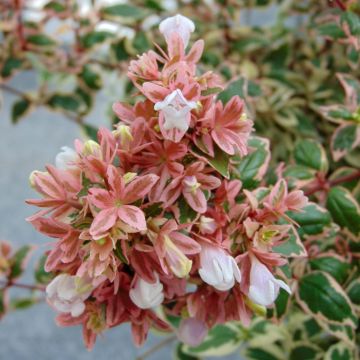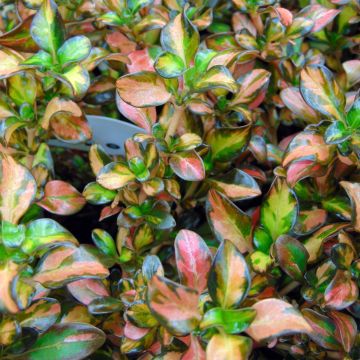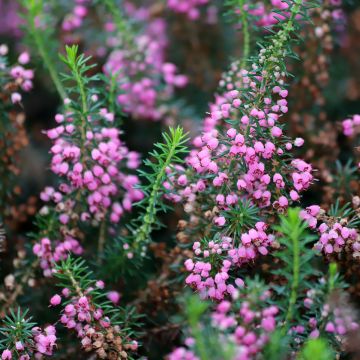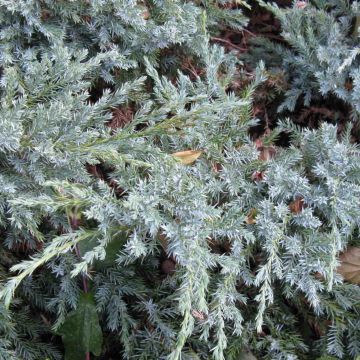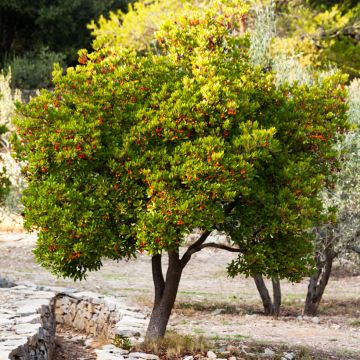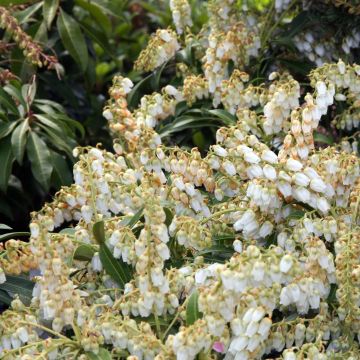

Thuja occidentalis Malonyana Aurea - Eastern White Cedar


Thuja occidentalis Malonyana Aurea - Eastern White Cedar


Thuja occidentalis Malonyana Aurea - Eastern White Cedar
Thuja occidentalis Malonyana Aurea - Eastern White Cedar
Thuja occidentalis Malonyana Aurea
Eastern White Cedar, Northern White Cedar, American Arborvitae, Eastern Arborvitae
This item cannot be shipped to the selected country
Delivery charge from €5.90
More information
Schedule delivery date,
and select date in basket
This plant carries a 24 months recovery warranty
More information
We guarantee the quality of our plants for a full growing cycle, and will replace at our expense any plant that fails to recover under normal climatic and planting conditions.
From €5.90 for pickup delivery and €6.90 for home delivery
Express home delivery from €8.90.
Does this plant fit my garden?
Set up your Plantfit profile →
Description
The Thuja occidentalis 'Malonyana Aurea' is a medium-sized conifer with relatively fast growth and is highly appreciated for its architectural silhouette. It naturally forms a narrow column with multiple leading shoots, giving it a dense vegetation. Its golden foliage makes it extremely ornamental during the growing season and even in winter when it turns to a beautiful bronze yellow. Its aesthetic makes it ideal for forming tall hedges, especially since it tolerates pruning well, but it is also attractive when planted in rows or even as a standalone plant. Very hardy, it is easy to grow in most ordinary, well-drained soils as long as they remain moist, as it does not like dryness in the soil or the air. Tolerating urban pollution, its narrow shape allows it to be planted even in small gardens.
The Thuja occidentalis, also known as Eastern Arborvitae or White Cedar, is sometimes called Canadian Cedar or Balai. It is an evergreen conifer belonging to the Cupressaceae family, which includes many ornamental genera, such as Junipers, Chamaecyparis, or the majestic Bald Cypress (Taxodium distichum). The Thuja genus only has five species, including T. occidentalis, native to northeastern North America, where it is found over a large geographic area. This area extends from the Great Lakes region in the United States to the mouth of the St. Lawrence River in Canada, covering parts of Ontario and southern Quebec. Growing in occasionally waterlogged soils in the north, it develops up to 900 m in altitude in the south, in less humid areas. This diversity of conditions makes it a remarkably adaptable and very hardy plant. In its native regions, it forms a conical tree, reaching a limited height of 7 m in marshy areas over 120 years but reaching 22 m with a trunk diameter of 32 cm (at 1.30 m above ground) in better-drained soils. The botanical species has inspired breeders who have created more than 300 cultivars for ornamental purposes.
The 'Malonyana Aurea' variety is highly prized for its very architectural silhouette, which is a very dense column. With relatively fast growth, this conifer reaches approximately 3 m in height and 70 cm in width after ten years of cultivation. At maturity, around 25 or 30 years, its stature will vary from 7 to 10 m in height with a diameter of 1.80 m. When crushed, this conifer is adorned with aromatic foliage of flattened branches covered with 3 to 5-mm long scales. These flat twigs, formed by overlapping leaves, orient themselves in different positions, giving the plant a slightly tousled appearance. The golden yellow vegetation is desirable during the growing season. It remains so in winter, turning to a very bright bronze yellow under the frequently cloudy sky.
The 'Malonyana Aurea' Western Red Cedar, resistant to cold and the polluted atmosphere of our cities, will find its place, even in the smallest gardens. Its architectural silhouette makes it a beautiful specimen when planted alone. In contrast, in larger spaces, you can plant it in rows to create a perspective or also use it to create a tall windbreak hedge, against which dark green or purple foliage plants will stand out. The Cercis canadensis 'Forest Pansy', an Eastern Redbud tree with heart-shaped purple leaves, will allow you to create a splendid contrast, even early in the season, when its bright pink flowering appears on the still bare branches. The Prunus lusitanica 'Tico', or Azores Laurel's green leaves carried by red petioles, will also be well highlighted against the golden background. A small Ornamental Apple tree, such as the Malus coccinella 'Courtarou', will also be an excellent choice to create an attractive and ever-changing scene with a succession of changing colours. Its foliage emerges in shades of purple before turning dark green and ending in an orange apotheosis in autumn. The golden colour of the Thuja will magnify its purplish-pink spring flowering, while in autumn, it will produce small purple-red fruits.
Report an error about the product description
Plant habit
Foliage
Botanical data
Thuja
occidentalis
Malonyana Aurea
Cupressaceae
Eastern White Cedar, Northern White Cedar, American Arborvitae, Eastern Arborvitae
Cultivar or hybrid
Other Thuya - Thuja
Planting and care
The Thuja occidentalis 'Malonyana Aurea' is planted from October to December and from February to April in deep, ordinary, loose, and not too heavy soil, moderately acidic to slightly alkaline, retaining some freshness. It only fears scorching temperatures and prolonged drought, needing a certain level of atmospheric humidity. It grows in sunny exposure or partial shade in southern climates to develop well. Soak the root balls in a bucket for fifteen minutes before planting. Optionally, organic amendment should be added generously to the planting and water in the first few years and in case of prolonged drought. In very poor soil, you can apply a special conifer fertiliser every year in April and cultivate the soil in summer. This very hardy conifer (up to -25°C at least) tolerates pruning well.
Planting period
Intended location
Care
This item has not been reviewed yet - be the first to leave a review about it.
Evergreen shrubs
Haven't found what you were looking for?
Hardiness is the lowest winter temperature a plant can endure without suffering serious damage or even dying. However, hardiness is affected by location (a sheltered area, such as a patio), protection (winter cover) and soil type (hardiness is improved by well-drained soil).

Photo Sharing Terms & Conditions
In order to encourage gardeners to interact and share their experiences, Promesse de fleurs offers various media enabling content to be uploaded onto its Site - in particular via the ‘Photo sharing’ module.
The User agrees to refrain from:
- Posting any content that is illegal, prejudicial, insulting, racist, inciteful to hatred, revisionist, contrary to public decency, that infringes on privacy or on the privacy rights of third parties, in particular the publicity rights of persons and goods, intellectual property rights, or the right to privacy.
- Submitting content on behalf of a third party;
- Impersonate the identity of a third party and/or publish any personal information about a third party;
In general, the User undertakes to refrain from any unethical behaviour.
All Content (in particular text, comments, files, images, photos, videos, creative works, etc.), which may be subject to property or intellectual property rights, image or other private rights, shall remain the property of the User, subject to the limited rights granted by the terms of the licence granted by Promesse de fleurs as stated below. Users are at liberty to publish or not to publish such Content on the Site, notably via the ‘Photo Sharing’ facility, and accept that this Content shall be made public and freely accessible, notably on the Internet.
Users further acknowledge, undertake to have ,and guarantee that they hold all necessary rights and permissions to publish such material on the Site, in particular with regard to the legislation in force pertaining to any privacy, property, intellectual property, image, or contractual rights, or rights of any other nature. By publishing such Content on the Site, Users acknowledge accepting full liability as publishers of the Content within the meaning of the law, and grant Promesse de fleurs, free of charge, an inclusive, worldwide licence for the said Content for the entire duration of its publication, including all reproduction, representation, up/downloading, displaying, performing, transmission, and storage rights.
Users also grant permission for their name to be linked to the Content and accept that this link may not always be made available.
By engaging in posting material, Users consent to their Content becoming automatically accessible on the Internet, in particular on other sites and/or blogs and/or web pages of the Promesse de fleurs site, including in particular social pages and the Promesse de fleurs catalogue.
Users may secure the removal of entrusted content free of charge by issuing a simple request via our contact form.
The flowering period indicated on our website applies to countries and regions located in USDA zone 8 (France, the United Kingdom, Ireland, the Netherlands, etc.)
It will vary according to where you live:
- In zones 9 to 10 (Italy, Spain, Greece, etc.), flowering will occur about 2 to 4 weeks earlier.
- In zones 6 to 7 (Germany, Poland, Slovenia, and lower mountainous regions), flowering will be delayed by 2 to 3 weeks.
- In zone 5 (Central Europe, Scandinavia), blooming will be delayed by 3 to 5 weeks.
In temperate climates, pruning of spring-flowering shrubs (forsythia, spireas, etc.) should be done just after flowering.
Pruning of summer-flowering shrubs (Indian Lilac, Perovskia, etc.) can be done in winter or spring.
In cold regions as well as with frost-sensitive plants, avoid pruning too early when severe frosts may still occur.
The planting period indicated on our website applies to countries and regions located in USDA zone 8 (France, United Kingdom, Ireland, Netherlands).
It will vary according to where you live:
- In Mediterranean zones (Marseille, Madrid, Milan, etc.), autumn and winter are the best planting periods.
- In continental zones (Strasbourg, Munich, Vienna, etc.), delay planting by 2 to 3 weeks in spring and bring it forward by 2 to 4 weeks in autumn.
- In mountainous regions (the Alps, Pyrenees, Carpathians, etc.), it is best to plant in late spring (May-June) or late summer (August-September).
The harvesting period indicated on our website applies to countries and regions in USDA zone 8 (France, England, Ireland, the Netherlands).
In colder areas (Scandinavia, Poland, Austria...) fruit and vegetable harvests are likely to be delayed by 3-4 weeks.
In warmer areas (Italy, Spain, Greece, etc.), harvesting will probably take place earlier, depending on weather conditions.
The sowing periods indicated on our website apply to countries and regions within USDA Zone 8 (France, UK, Ireland, Netherlands).
In colder areas (Scandinavia, Poland, Austria...), delay any outdoor sowing by 3-4 weeks, or sow under glass.
In warmer climes (Italy, Spain, Greece, etc.), bring outdoor sowing forward by a few weeks.

































